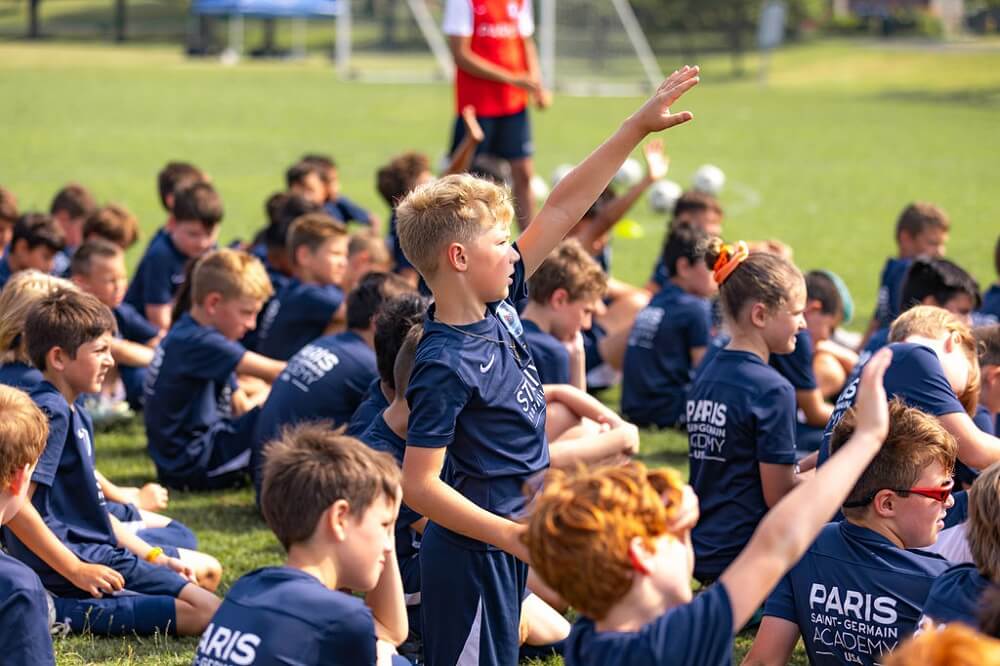Paris Saint-Germain (PSG) is renowned for its star-studded lineup featuring world-class talents like Kylian Mbappé, Neymar, and Lionel Messi. However, beyond the glitz and glamour of its senior squad, PSG boasts a highly regarded youth academy that has been pivotal in nurturing the next generation of football stars. With a commitment to developing homegrown talent, the club’s academy has produced a steady stream of players who are poised to make significant impacts on the first team and beyond.
In this article, we will delve into the structure and philosophy of PSG’s academy, explore some of the standout talents currently emerging, and highlight the importance of youth development for the club’s future success.
1. The Philosophy of PSG’s Academy
PSG’s youth academy, known as Camp des Loges, is situated in Saint-Germain-en-Laye, just outside Paris. The academy’s mission is to cultivate young footballers by providing them with high-quality training, education, and a supportive environment. The club places significant emphasis on not only technical and tactical development but also on instilling strong values and a sense of professionalism.
The academy’s approach integrates various aspects of player development, including:
- Technical Skill Development: Young players are trained in essential technical skills, including passing, dribbling, shooting, and tactical awareness. This foundational training equips them to excel in competitive environments.
- Tactical Education: PSG’s academy coaches prioritize teaching players about different tactical systems and formations. This knowledge allows young talents to adapt seamlessly to the first team’s playing style.
- Physical and Mental Conditioning: The academy focuses on the physical and mental aspects of a player’s development, ensuring that they are physically fit and mentally resilient to handle the pressures of professional football.
- Integration with the First Team: PSG has established a clear pathway for young players to progress to the first team. Regular training sessions with senior players and opportunities to participate in first-team matches are crucial for their development.
2. Recent Successes: Notable Academy Graduates
PSG’s commitment to youth development has yielded impressive results over the years. Numerous players who have emerged from the academy have not only made their mark at PSG but have also gone on to enjoy successful careers in various leagues. Here are some notable academy graduates:
Kylian Mbappé
While Kylian Mbappé is now a global superstar, his journey began at PSG’s academy. Joining the club at age 14, he quickly rose through the ranks, showcasing his exceptional talent. After making his first-team debut in 2015, Mbappé became one of the most electrifying forwards in the world, known for his blistering speed and clinical finishing. His success has not only put PSG on the map but has also highlighted the potential of the academy to produce top-tier talent.
Presnel Kimpembe
Presnel Kimpembe is another shining example of PSG’s academy success. A product of the youth system, Kimpembe has established himself as a key figure in the club’s defense. His strong performances, both domestically and in European competitions, have made him a vital asset for the team. Kimpembe’s story exemplifies the academy’s ability to nurture players who can step into high-pressure situations and thrive.
Marco Verratti
Although Marco Verratti joined PSG from Pescara at a young age, he has become synonymous with the club’s philosophy and identity. The Italian midfielder has developed into one of the best in his position, known for his exceptional passing ability, vision, and tactical intelligence. His journey from a young talent to a key midfielder is a testament to PSG’s commitment to player development.
3. Emerging Talents: Future Stars to Watch
While the academy has produced established stars, it continues to develop new talents who are poised to make a significant impact in the coming years. Here are some emerging players to keep an eye on:
Edouard Michut
Edouard Michut is a talented midfielder known for his technical ability and composure on the ball. He possesses exceptional passing range and vision, making him a vital playmaker in the midfield. Michut’s performances for PSG’s youth teams have garnered attention, and he is seen as a future prospect for the first team.
Ismaël Gharbi
Ismaël Gharbi is a highly-rated forward who has been making waves within PSG’s youth setup. With a knack for scoring goals and creating chances, Gharbi’s versatility allows him to play in various attacking positions. His development in the academy suggests that he could be a valuable asset for the senior squad in the near future.
Loïc Mbe Soh
Loïc Mbe Soh is a promising central defender known for his physicality and tactical awareness. Having made appearances for PSG’s youth teams, Mbe Soh has shown great potential to become a key part of the club’s defensive unit. His ability to read the game and perform under pressure makes him one to watch as he progresses through the ranks.
4. The Importance of Youth Development for PSG
PSG’s commitment to its academy is more than just a means of developing players; it is a strategic necessity. Several factors highlight the importance of youth development for the club:
- Financial Sustainability: Developing homegrown talent reduces the financial burden of purchasing high-profile players. By nurturing young prospects, PSG can rely on its academy to provide quality players for the first team, leading to a more sustainable model.
- Club Identity: Investing in youth development helps create a strong club identity. Homegrown players often have a deeper connection to the club and its values, fostering loyalty and a sense of pride among fans.
- Competitiveness: As football becomes increasingly competitive, having a strong academy can provide a club with a unique advantage. Youth players who transition successfully to the first team can complement established stars, creating a well-rounded squad.
- Integration into First Team: The successful integration of youth players into the first team provides them with invaluable experience. This exposure to high-stakes matches and training environments accelerates their development and enhances the overall quality of the squad.
5. The Future: PSG’s Academy in the Spotlight
As PSG continues to invest in its academy, the future looks bright for emerging talents. With the likes of Edouard Michut, Ismaël Gharbi, and Loïc Mbe Soh on the horizon, fans can anticipate witnessing a new wave of players who embody the club’s ethos.
The academy’s success is not only about producing top players for the first team but also about fostering a culture of excellence and ambition. PSG’s commitment to youth development reflects a long-term vision, ensuring that the club remains competitive in both domestic and international competitions.
In conclusion, PSG’s academy is a vital component of the club’s identity and future success. As it continues to nurture and develop young talent, the world will be watching closely to see which future stars emerge from the shadows and shine on the grand stage of professional football. The legacy of PSG’s youth system will undoubtedly leave an indelible mark on the club’s history for years to come.


